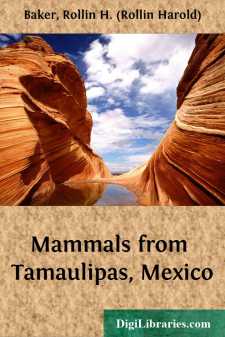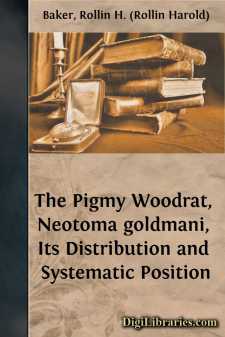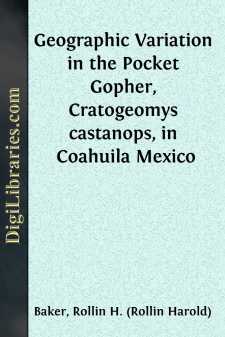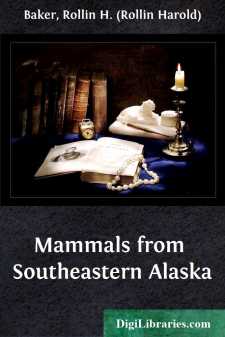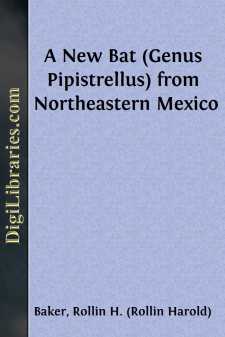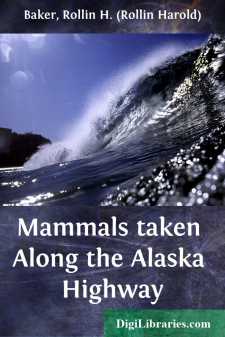Categories
- Antiques & Collectibles 13
- Architecture 36
- Art 48
- Bibles 22
- Biography & Autobiography 813
- Body, Mind & Spirit 142
- Business & Economics 28
- Children's Books 15
- Children's Fiction 12
- Computers 4
- Cooking 94
- Crafts & Hobbies 4
- Drama 346
- Education 46
- Family & Relationships 57
- Fiction 11828
- Games 19
- Gardening 17
- Health & Fitness 34
- History 1377
- House & Home 1
- Humor 147
- Juvenile Fiction 1873
- Juvenile Nonfiction 202
- Language Arts & Disciplines 88
- Law 16
- Literary Collections 686
- Literary Criticism 179
- Mathematics 13
- Medical 41
- Music 40
- Nature 179
- Non-Classifiable 1768
- Performing Arts 7
- Periodicals 1453
- Philosophy 64
- Photography 2
- Poetry 896
- Political Science 203
- Psychology 42
- Reference 154
- Religion 513
- Science 126
- Self-Help 84
- Social Science 81
- Sports & Recreation 34
- Study Aids 3
- Technology & Engineering 59
- Transportation 23
- Travel 463
- True Crime 29
Mammals from Tamaulipas, Mexico
Description:
Excerpt
Forming the northeastern border of Mexico, Tamaulipas extends in an elongated, north-south direction from the Temperate into the Torrid Zone and contains faunal elements from both the Nearctic and Neotropical regions. The mammals are less known than those from some of the bordering states; for the most part collecting has been limited to a few localities, chiefly along the Pan-American Highway. Accordingly, as a step towards a long-range study of the mammals of Tamaulipas, the Museum of Natural History of the University of Kansas acquired from William J. Schaldach, Jr., a small, but significant, collection of mammals taken in the last month of 1949 and the first four months of 1950.
Collections were made at several places in the vicinity of Ciudad Victoria, including localities along the humid, eastern face of the Sierra Madre Oriental. Many of these specimens were obtained near camps made west of the village of El Carrizo. This small community is on the Pan-American highway, 70 kilometers (by highway) south of Ciudad Victoria. The resulting collections, which are reported upon here, disclose that several tropical mammals range farther northward than previously reported. Funds for financing the field work were made available by a grant from the Kansas University Endowment Association.
ACCOUNTS OF SPECIES
Didelphis mesamericana mesamericana Oken
Central American Opossum
Did[elphys] mes-americana Oken, Lehrbuch d. Naturgesch., pt. 3, vol. 2:1152, 1816. (Type from Northern Mexico.)
Didelphis mes-americana Allen, Bull. Amer. Mus. Nat. Hist., 16:256, August 18, 1902.
Specimens examined, 2 as follows: 36 km. N and 10 km. W Ciudad Victoria, 1 km. E El Barretal, on RÃo PurificacÃon, 1; 12 km. N and 4 km. W Ciudad Victoria, 1.
Philander opossum pallidus (Allen)
Four-eyed Opossum
Metachirus fuscogriseus pallidus Allen, Bull. Amer. Mus. Nat. Hist., 14:215, July 3, 1901. (Type from Orizaba, Veracruz, Mexico.)
Philander opossum pallidus Dalquest, Occ. Papers Mus. Zool., Louisiana State Univ., No. 23:2, July 10, 1950.
Specimens examined, 3 from 70 km. [by highway] S Ciudad Victoria and 2 km. W El Carrizo.
Remarks.—These three specimens have proportionately longer tails than typical P. o. pallidus from central Veracruz; total length and length of tail of two adult males are 575, 295, and 568, 290 respectively.
This marsupial has been previously unrecorded from Tamaulipas or from so northward a locality. The four-eyed opossum evidently ranges northward along the east face of the Sierra Madre Oriental within the humid division of the Upper Tropical Life-zone. These animals, all males, were taken in steel traps baited with the bodies of skinned mice or birds. Sets were made along well-used trails leading from a densely vegetated arroyo into a corn field through openings in a fence of roughly piled logs. The elevation of this locality is approximately 2500 feet.
Desmodus rotundus murinus Wagner/span
Vampire Bat
D[esmodus] murinus Wagner, Schreber's Säugthiere, Suppl., 1:377, 1840. (Type from Mexico.)
Desmodus rotundus murinus Osgood, Field Mus. Nat. Hist., publ. 155, zool. ser., 10:63, January 10, 1912.
Specimens examined, 9 as follows: 12 km. W and 8 km. N Ciudad Victoria, 2500 ft., 3; 70 km. [by highway] S Ciudad Victoria and 6 km. W of the [Pan-American] highway [at El Carrizo], 6.
Remarks.—Vampire bats were taken at two caves. At the cave called "Los Troncones", 12 kilometers west and 8 kilometers north of Ciudad Victoria, seven bats were shot down; three were saved. The second cave, south of Ciudad Victoria, was considerably damper than the first. Vampires were found in a small side chamber; nine bats were knocked down. No other kinds of bats were present in either cave....


